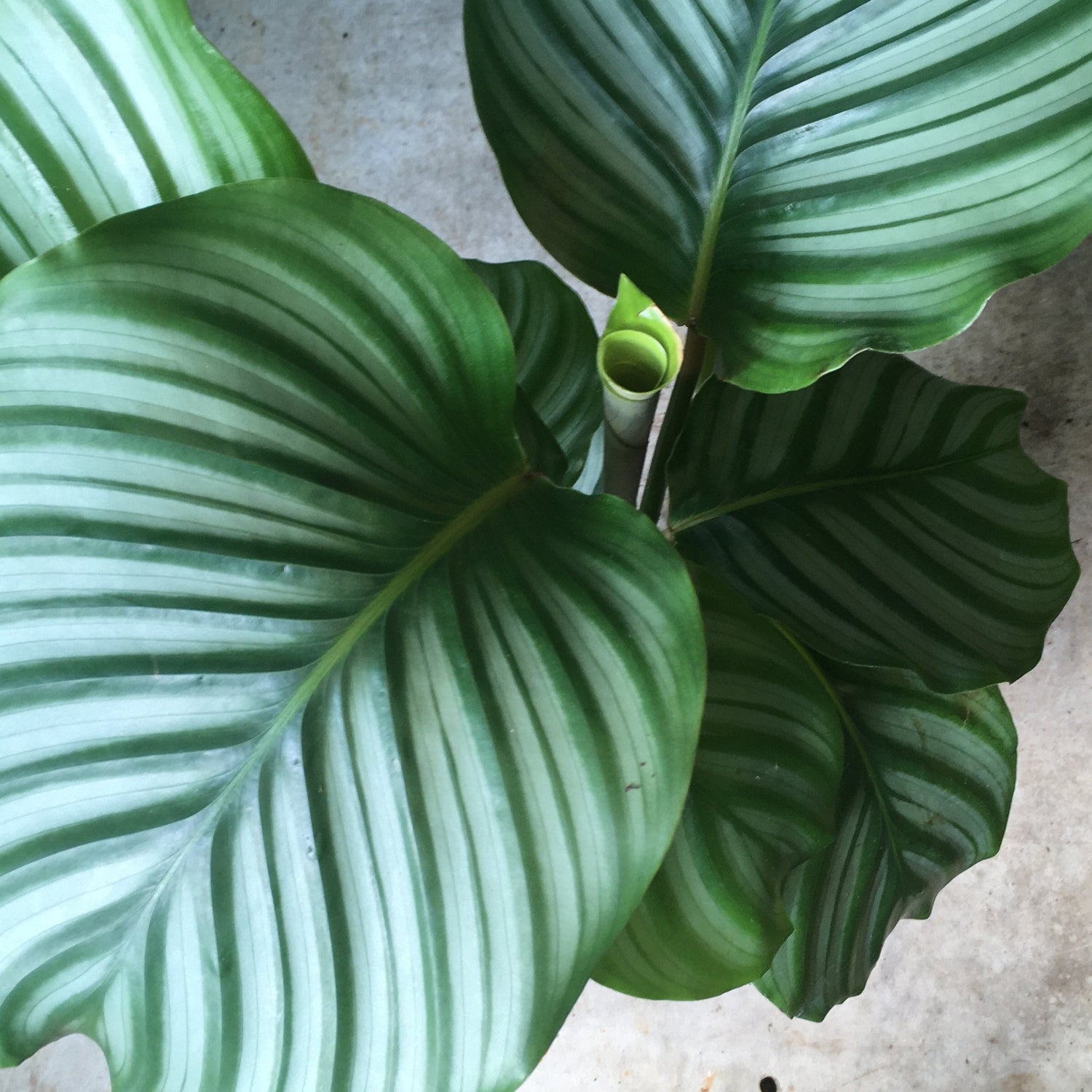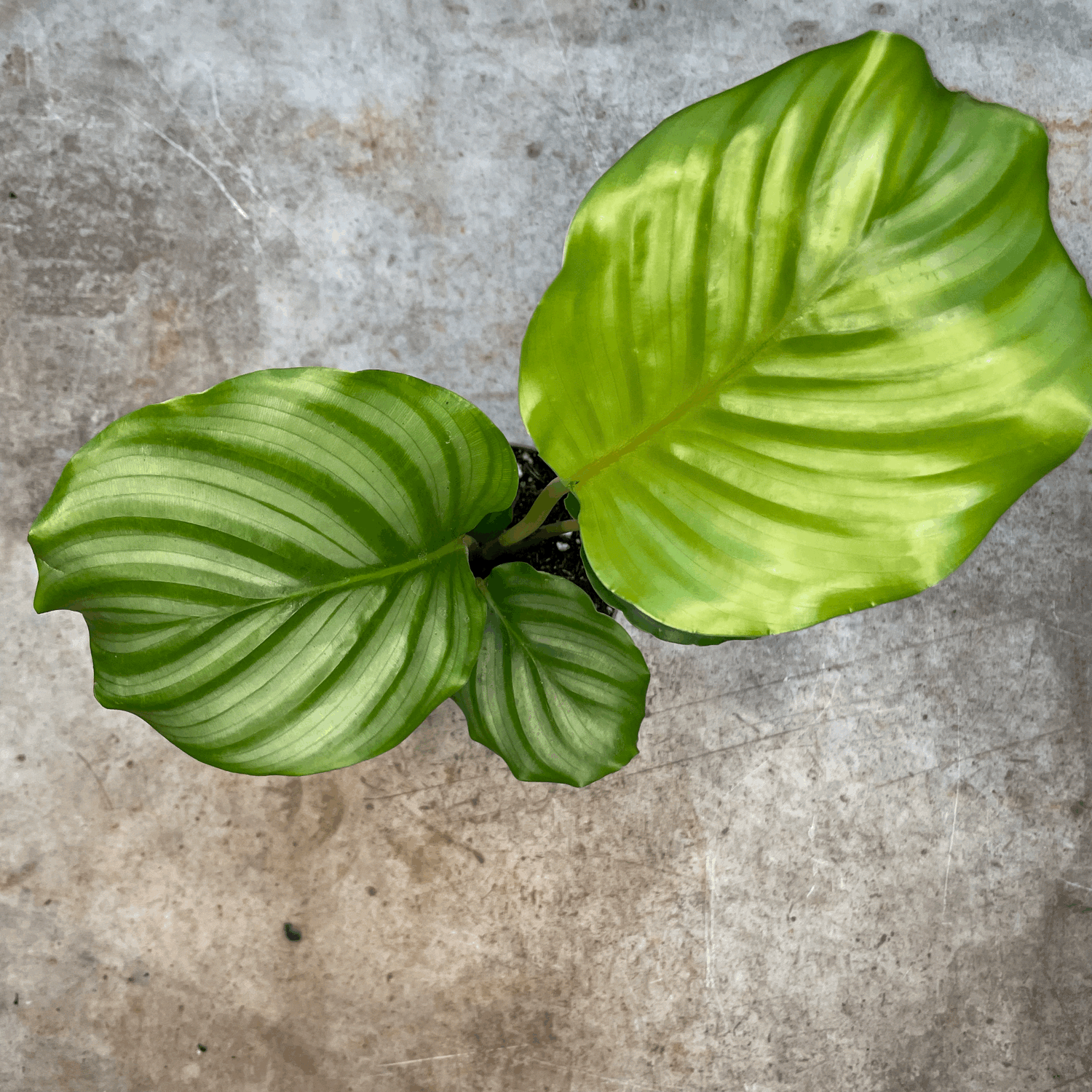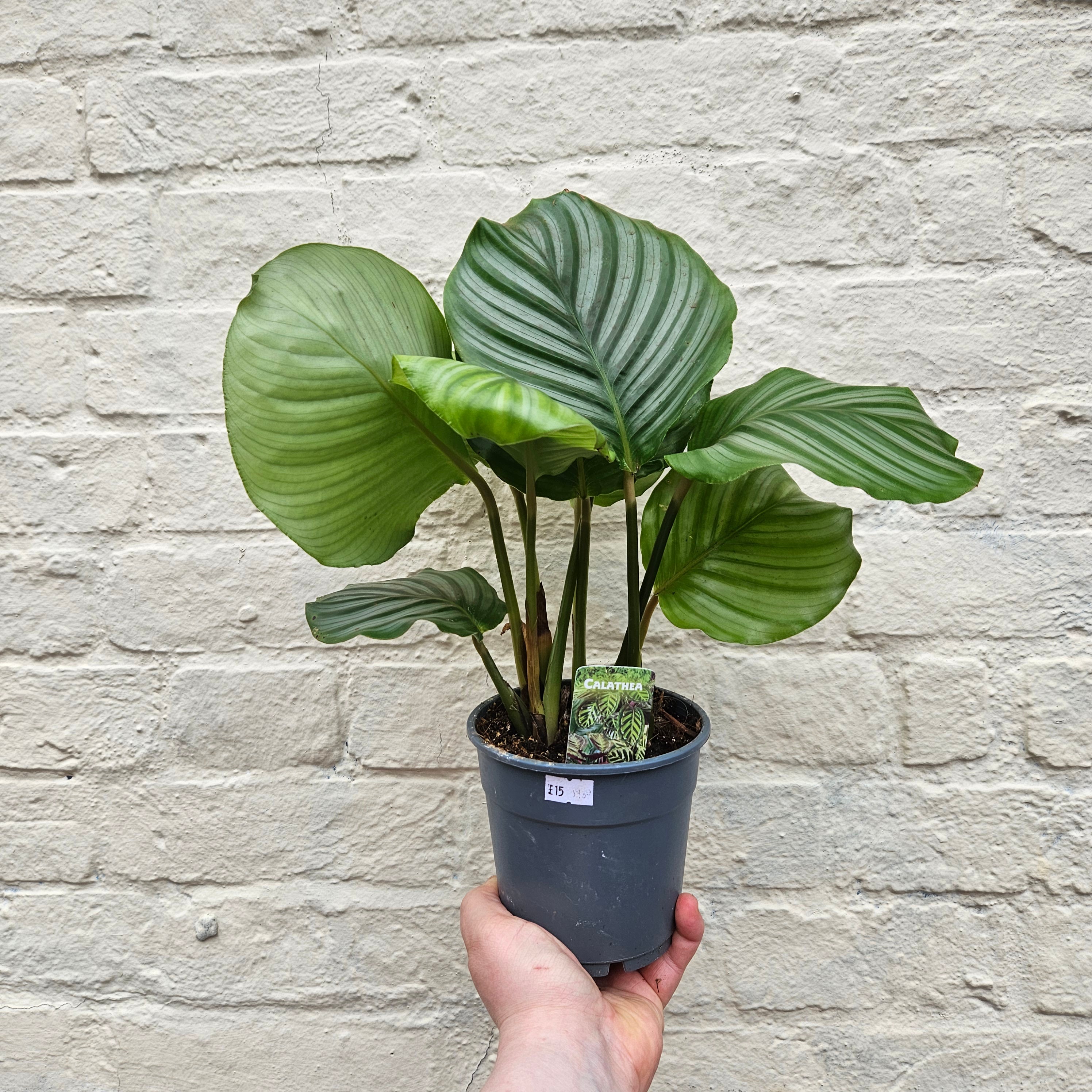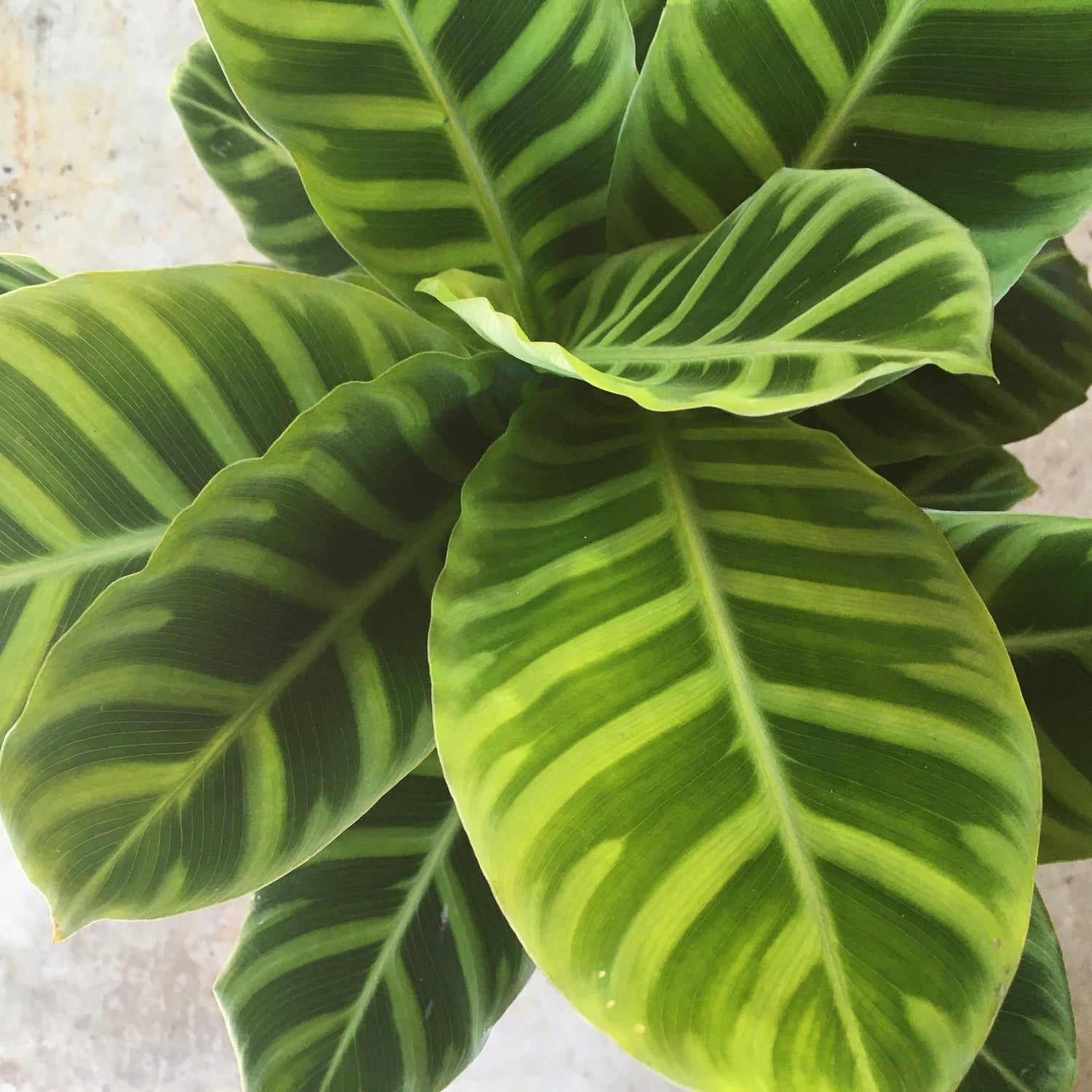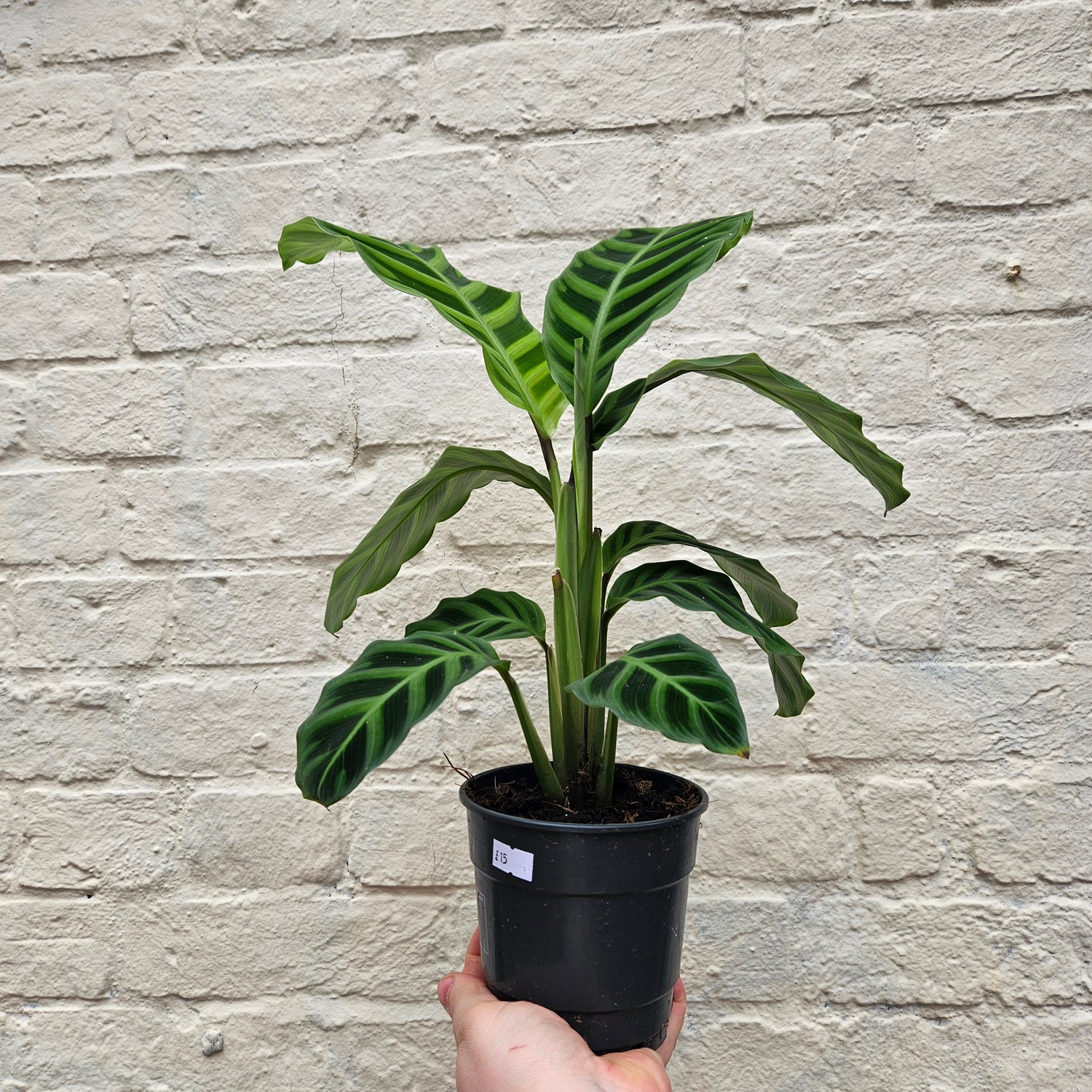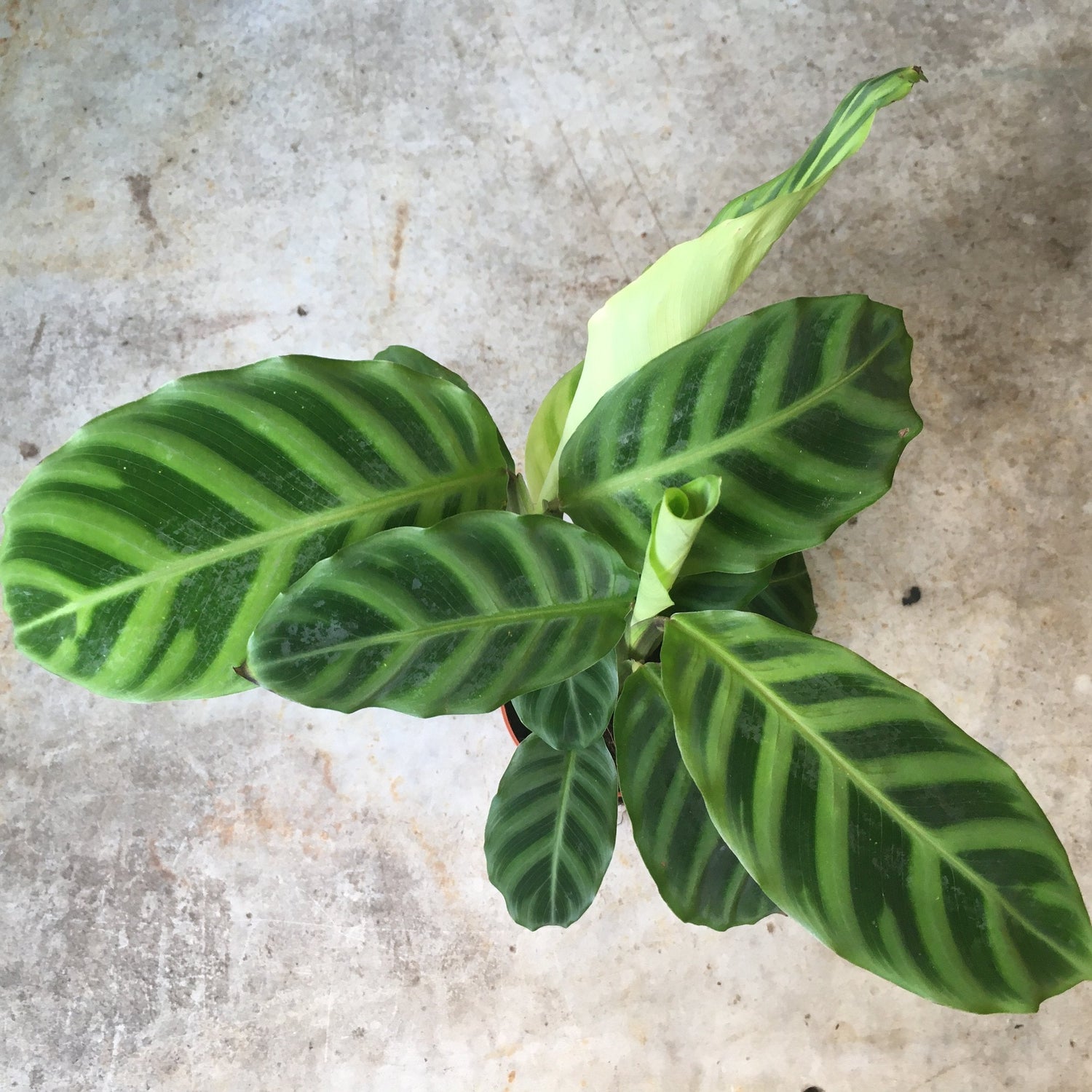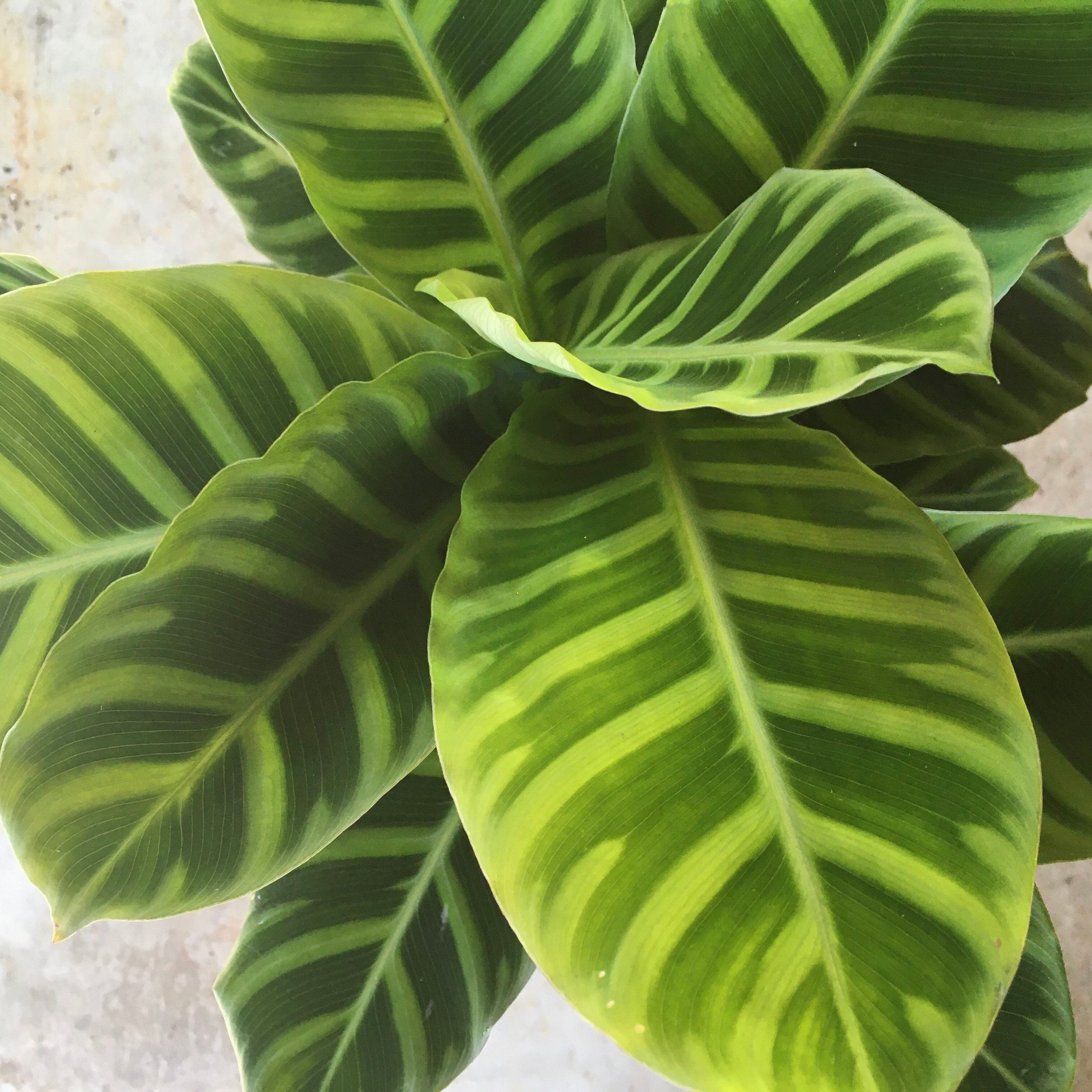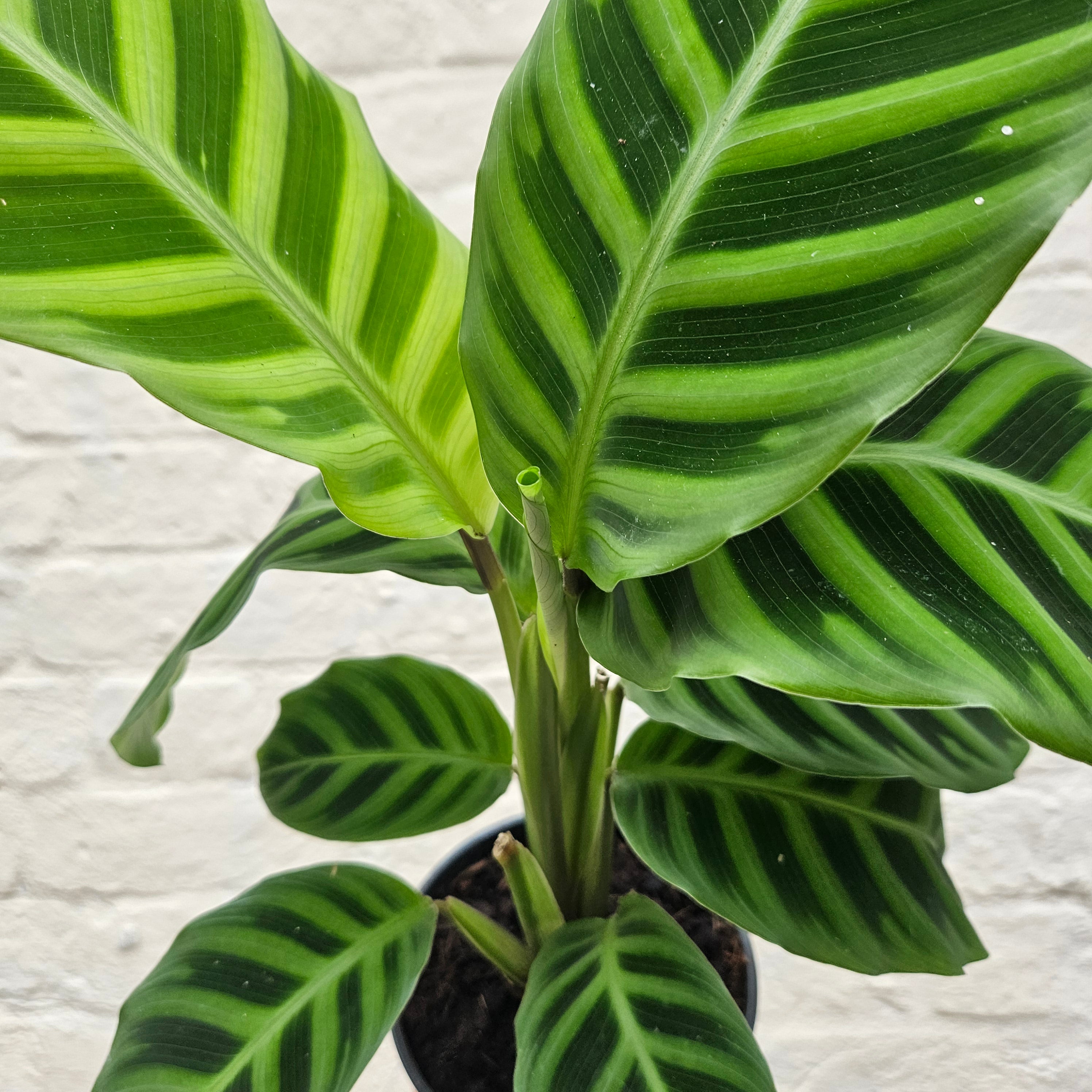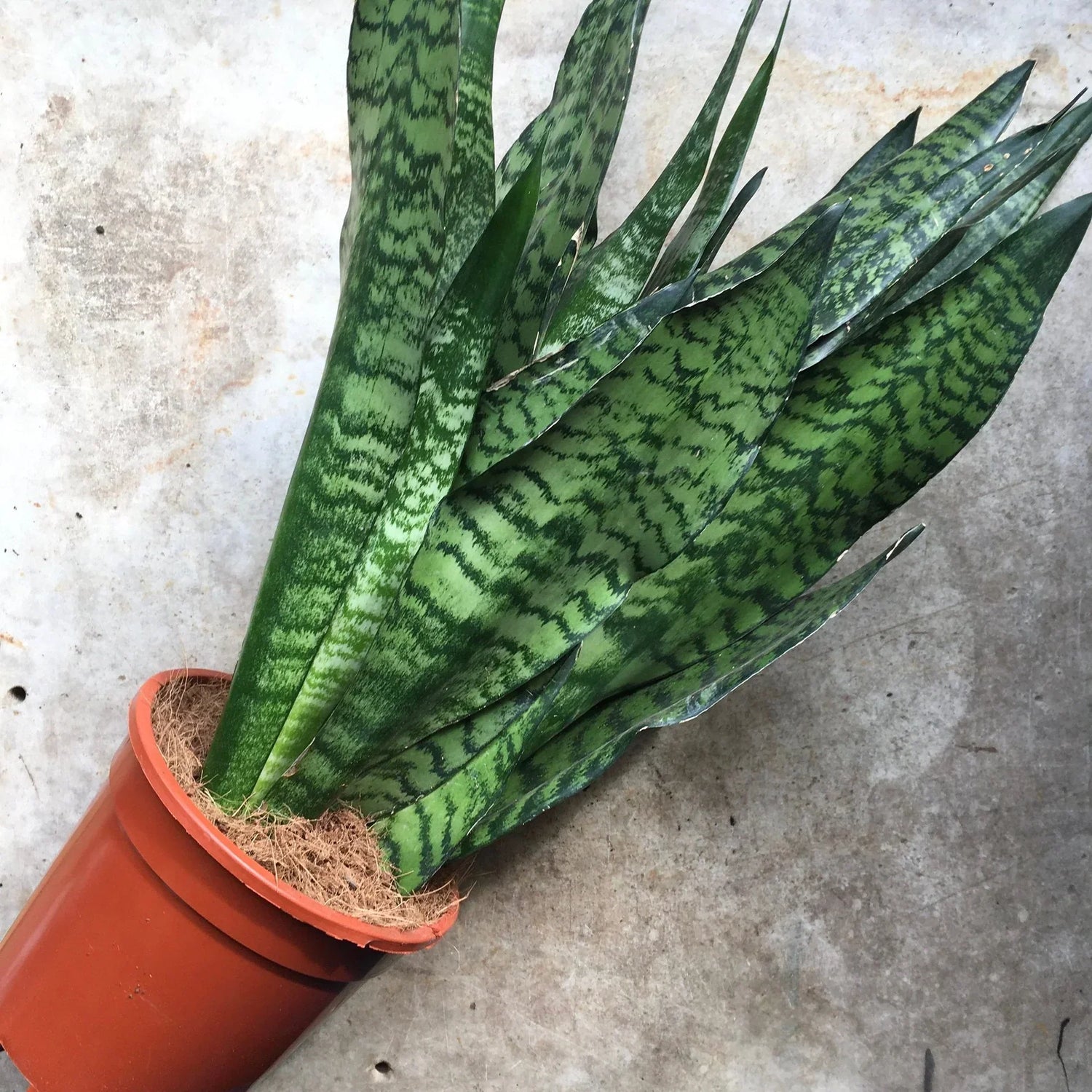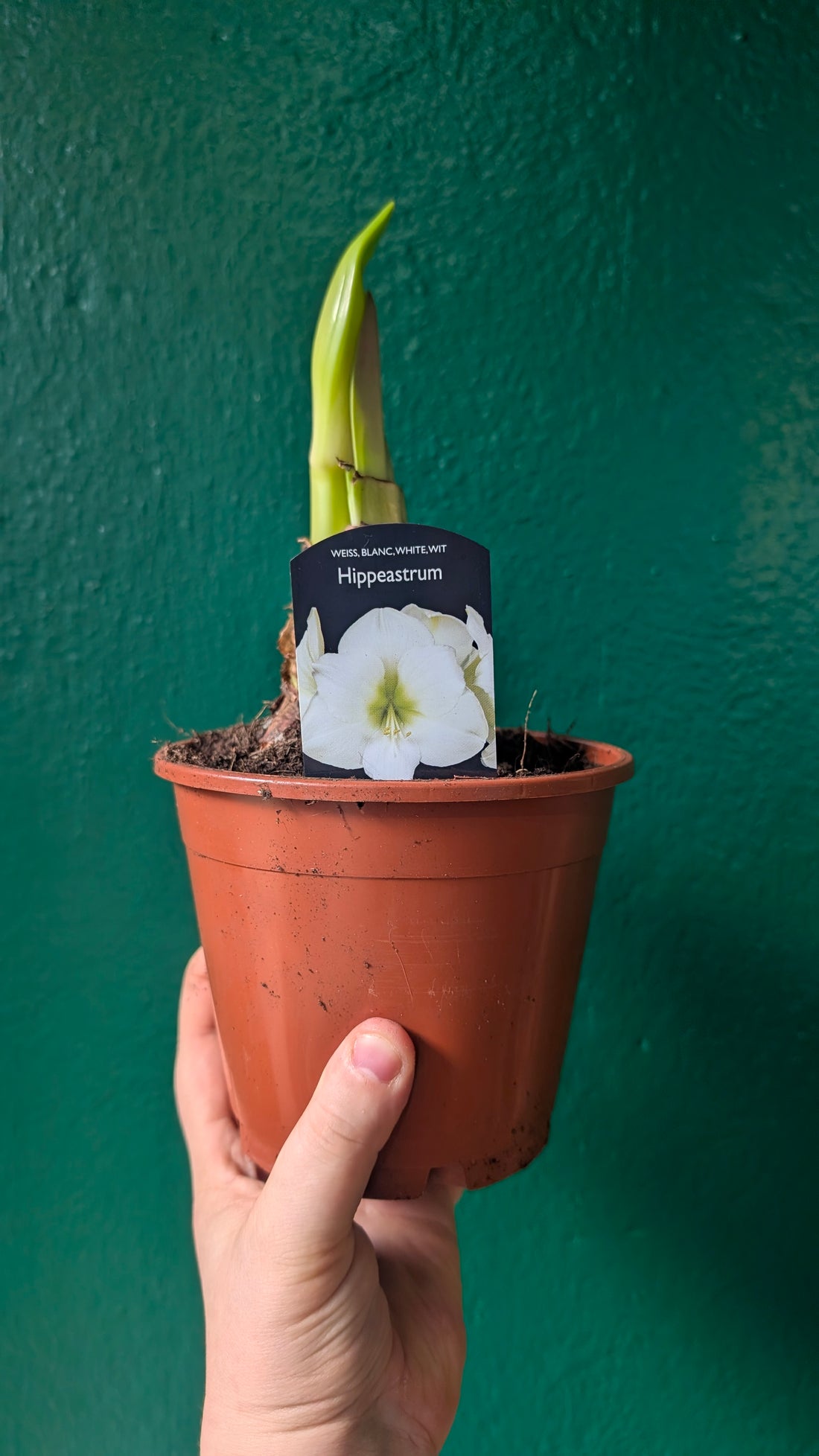Calatheas or Prayer plants are one of our best-selling houseplants. Calathea ornata 'Sanderiana' (Pinstripe plant/ Prayer Plant) is a particularly popular variety of Geoppertia, it boasts spectacular leaves and has very distinctive patterned leaves, with paint-like thin pink stripes. In this comprehensive guide, we'll walk you through everything you need to know to keep your Geopertia happy, healthy and thriving.
Calathea Overview
Geoppertia, also known as Calathea or Prayer Plants, are native to the tropical rainforests of South America. Recent reclassification means that although this plant is known as a Calathea, its actual genus is Goeppertia! With so many to choose from these beautiful plants are great indoor houseplants and are very versatile!
The leaves can vary in shape and colour with stripes and veining and often have nicknames like rattlesnake plant, Peacock plant or Zebra plant. As it is a member of the prayer plant family, during the day the leaves lower and then rise at night, an adaptation that helps the plant absorb and reflect light.

How to Look After a Goeppertia syn. Calathea (Prayer plant)
Light requirements: For Calatheas to thrive it needs a medium to bright indirect light, a few feet from an east or west-facing window is best. Too much direct light will cause leaves to burn, if this happens move the prayer plant to a slightly shadier position.
Watering: Calatheas have specific water requirements, keep their soil moist but not waterlogged, as sitting in water will cause root rot. Water when the top inch of soil has dried out slightly and allow it to drain thoroughly. Geoppertias can be sensitive to chemicals in tap water and this can cause browning edges, therefore they prefer to be watered with rainwater. However, as this is not always possible you can leave tap water out to stand for 24 hours before watering.
Temperature and Humidity: Calatheas love humidity. A lack of humidity can cause crispy leaf edges. Central heating and dry air are a sure way to make your plant suffer as are cold drafts, ideally, keep them at a temperature above 15°C and humidity around 70%. To boost humidity you can group humidity-loving plants together, use a humidifier or situate them in a bathroom or kitchen.
Toxicity: All Calatheas are non-toxic to humans and pets. However, if they show signs of nausea or vomiting take them to a vet immediately.
Feeding: Apply a liquid fertiliser as directed during the growing season (spring and summer) every 2-4 weeks but reduce it in winter. Follow the instructions on the fertiliser packaging for the dilution ratio.
Repotting: Repot every two to three years during spring or when it has outgrown its current container. Size up one to two inches bigger than its current container and make sure the pot has adequate drainage holes.
How to Re-pot a Goeppertia syn. Calathea
When to re-pot:
Calatheas generally need repotting every 2 to 3 years, or when their roots become crowded and start circling the base of the pot, or growing out of the drainage holes. Spring is the best time to repot, as the plant is actively growing, try to avoid repotting plants in winter.
Selecting the Right Pot:
Choose a pot that is one or two sizes larger (this refers to the diameter of the plant pot, normally measured in centimetres, the pot size would therefore be around 1-2 cm wider) than the current one, ensuring it has drainage holes at the bottom. This allows excess water to escape, preventing waterlogged soil. You can always place your nursery pot in a decorative pot if you want to retain drainage but hide the plastic.
Repotting Process:
Carefully remove the prayer plant from its current pot, gently loosening the root ball. Place it in the new pot and add fresh, well-draining potting mix around the roots. Gently press the soil to ensure the roots are bedded in. Avoid pressing too hard on the soil as this can cause it to compact. Water the plant thoroughly after repotting.

How to Propagate a Goeppertia syn. Calathea
Propagating a Calathea is an exciting way to grow new plants. The best way to do this is by root division. Follow these steps:
- Make sure you have watered your plant the day before you decide to propagate.
- Take the plant out of its pot and gently tease the roots apart, a garden fork can be used to help. Divide your plant into as many plants as you wish to make.
- Transplant these sections into a pot with the appropriate soil mix. Make sure they are potted to the same depth as they were previously. Water the soil.
- Care for the plant the same way you would normally.
How to Prune a Goeppertia syn. Calathea
Pruning your Calathea helps maintain its shape and encourages healthy growth. Trim yellow or brown leaves, as well as leggy stems.
How Often Should I Water a Goeppertia syn. Calathea
Watering frequency depends on various factors like humidity, temperature, location and pot size. As a general rule, check the top two inches of soil and water when it's dry. Water less in winter and more frequently during the growing season.
Why Are My Calathea Leaves Going Yellow/Brown/Curling?
- Yellow Leaves: Yellowing leaves can result from overwatering, poor drainage, or too much direct sunlight. Adjust your watering and lighting conditions accordingly. If the leaves are wilting and yellowing it is most likely to be due to overwatering, check the roots for rot and re-pot if necessary.
- Brown Leaves: Brown edges or spots may indicate low humidity, underwatering, or direct sunlight. Increase humidity and adjust your watering routine. Too much warmth, for example, if the plant is next to a radiator, can cause brown leaves that dry up and fall off. Tap water can also cause browning tips, try using rainwater or distilled water.
- Curling Leaves: Curling leaves can be a sign of underwatering, over-fertilization, or low humidity. Ensure proper watering and humidity levels.
Types of Goeppertia syn. Calathea
Goeppertia rufibarba syn. Calathea rufibarba (Velvet Calathea)
Goeppertia zebrina syn. Calathea zebrina (Zebra Plant/ Prayer Plant)
Goeppertia orbifolia syn. Calathea orbifolia (Prayer Plant)
Goeppertia warscewiczii syn. Calathea warscewiczii (Jungle Velvet/ Prayer Plant)
Goeppertia makoyana syn. Calathea makoyana (Peacock plant/ Prayer Plant)
Goeppertia insignis syn. Calathea lancifolia (Rattlesnake plant/ Prayer Plant)
Goeppertia concinna syn. Calathea leopardina (Prayer Plant)
Goeppertia majestica 'Sanderiana' syn. Calathea ornata 'Sanderiana' (Pinstripe plant/ Prayer Plant)
With these expert tips, you're well-equipped to care for your Goeppertia syn. Calathea and enjoy its lush, tropical beauty in your home. Happy Calathea growing!
